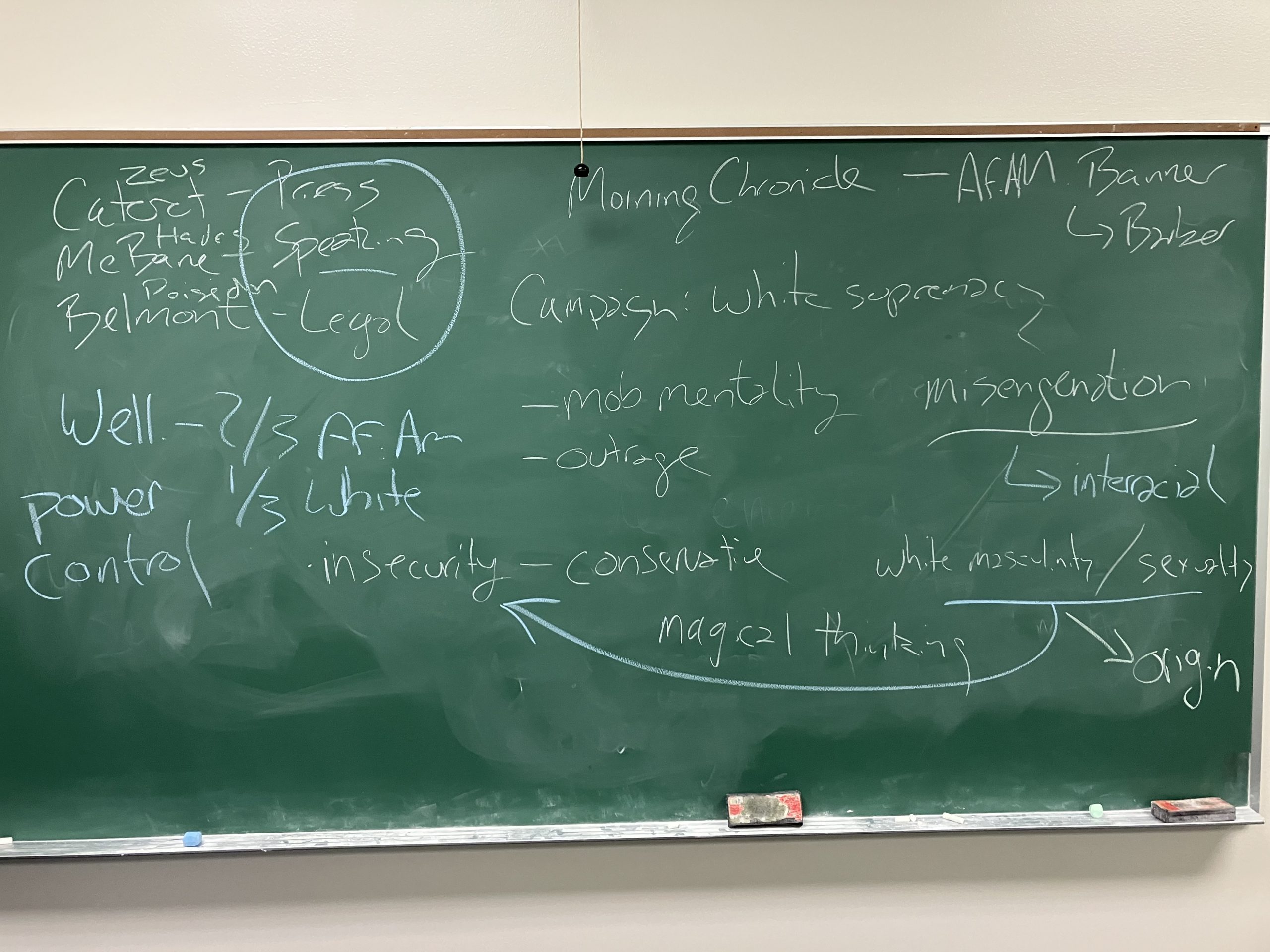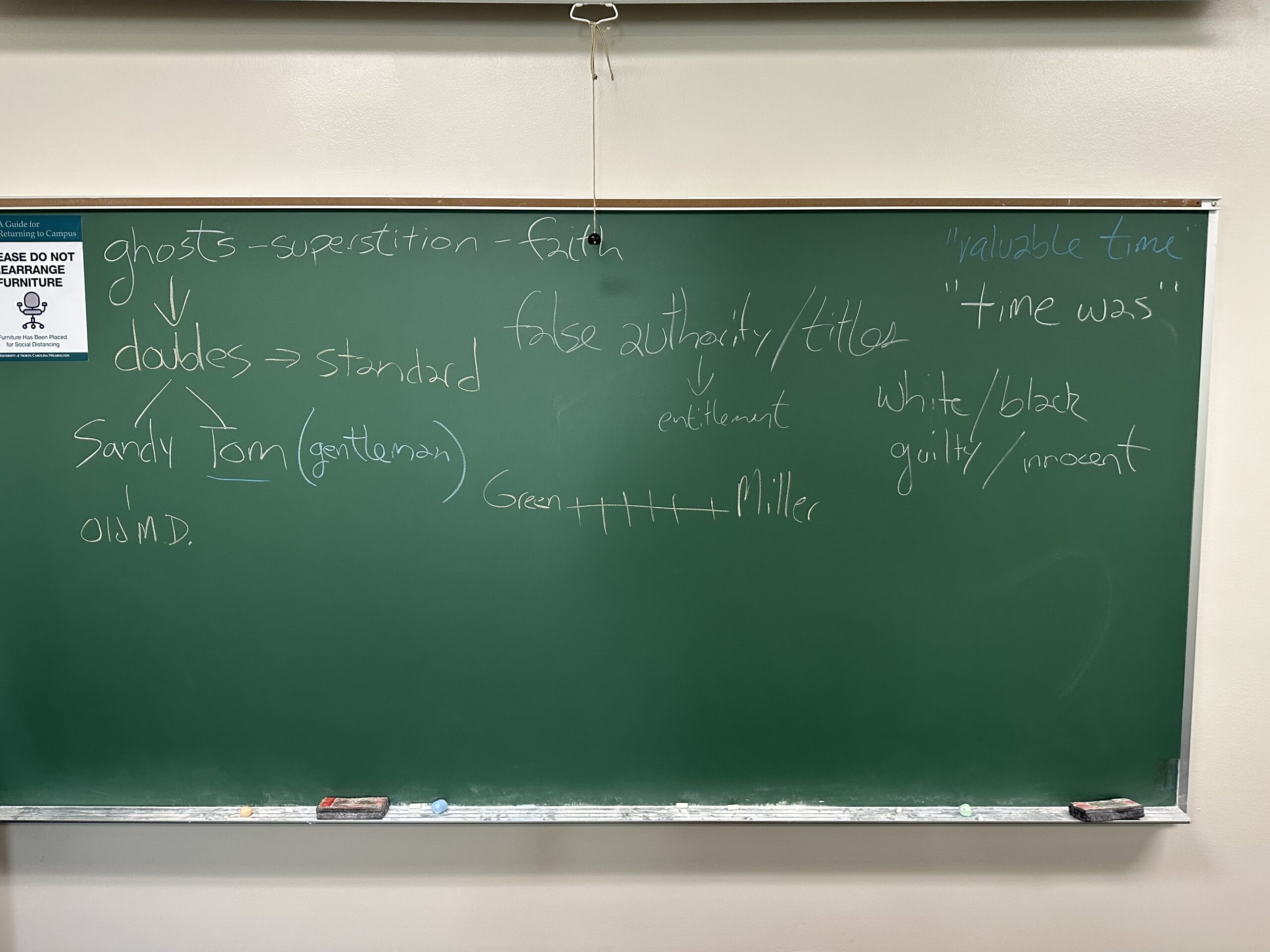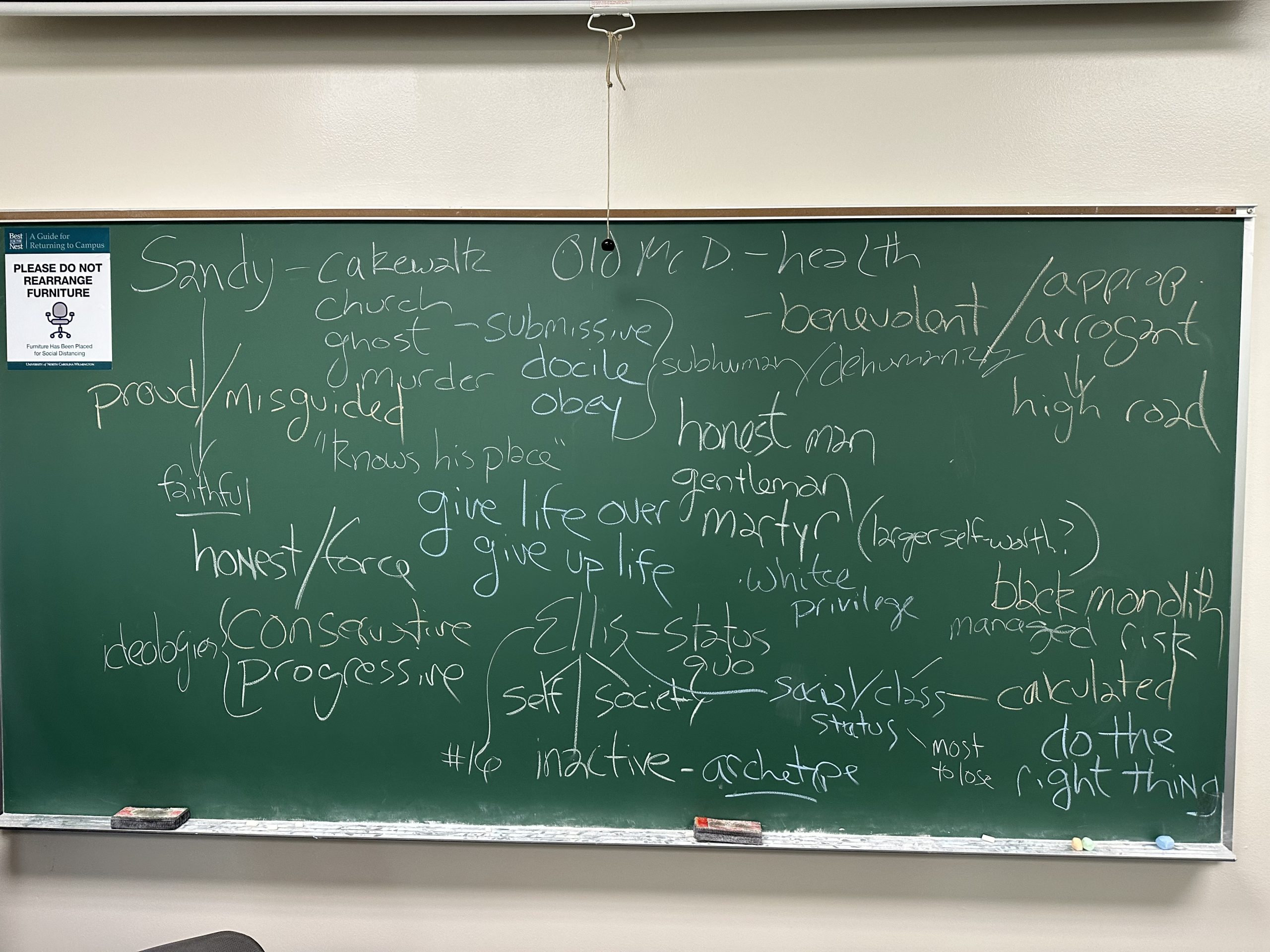The literary analysis unit ends with the students researching and writing a four-source annotated bibliography on scholarly articles that approach The Marrow of Tradition from a literary viewpoint. They then write an essay that blends their secondary source research with their own claims and textual evidence from the novel.
In the standalone “Introduction to Literary and Historical Studies” course, these two assignments would occur around midterm, and then the students would mirror it at the end of the semester only with the focus shifting to historical and cultural analysis. In a blended course like the one presented here, it may be difficult to squeeze both assignments into each of the first two units. Nonetheless, I want to include the assignment prompts:
Annotated Bibliography
An essential part of any piece of writing is figuring out what you want to say about a particular topic, in our case Charles W. Chesnutt’s novel The Marrow of Tradition. But before you can determine the I SAY portion of your argument, you first need to know and understand what other scholars have already said about it. What do THEY SAY? To find out, you will need to research the academic literature on the subject.
Before you begin your literary analysis essay of The Marrow of Tradition, I would like you to read and annotate four secondary, scholarly sources. These articles should be about literary aspects or elements of the novel, in the same vein as your Discussion Posts. Please do not include historical or cultural studies articles. You’ll do that during the second half of the semester before you write your historical / cultural essay on The Marrow of Tradition.
The sources for this annotated bibliography need to be peer-reviewed academic journal articles. They should be chosen for their relevance to your argument, and not merely for their ease of access. You may have to read more than four of these sources to locate the ones that precisely fit your topic. I recommend logging into Randall Library and then using the Google Scholar search engine to explore topics you’re interested in.
The purpose of reading and utilizing academic journal articles is to inform the reader about the scholarly conversation that has already taken place regarding your topic. Then when you write your paper, you will be able to situate yourself into that conversation. Source material should not be thought of as an extraneous obligation to meet some vague course requirement; rather, these materials should further your argument by providing additional support or by providing a counterclaim which you spend time refuting (thus, bolstering your own claim). Again, think of your research and writing on this topic as a conversation. When you bring in and respond to other voices, other ideas, and other angles you create a dialogue.
After you have located and read these pieces of criticism, I would like you to put them into an annotated bibliography. An annotated bibliography is similar to a general bibliography that you are all familiar with, but in addition to the necessary publishing information, you should include a paragraph summary (200+ words) of the main argument and salient details of the piece. You may also include a brief, critical response to the position of the cited author. The point of writing these summary critiques is to get you to engage in the source material and think about how it relates to your topic, rather than just compile a list of “works cited” at the end of your paper.
Essay: Literary Analysis
The first six weeks of our semester have been devoted to analyzing various literary elements of Charles W. Chesnutt’s novel The Marrow of Tradition. You’ve done four different Discussion Posts that have addressed specific literary components at specific intervals in the book. Now I’d like you to apply your literary analysis on a macro level and make an overarching claim about the entire novel. You may want to build off something you wrote in a Discussion Post. You may want to take an entirely new approach to a theme, character, symbol, etc. The topic is completely up to you. What is essential, though, is that you

1) Make a claim.
2) Support that claim with concrete evidence from the text.
3) Incorporate three of your four secondary sources from your annotated bibliography.
4) Anticipate counterarguments and address them.
5) Explain the significance of your argument and why it matters.
Do not confuse plot summary with evaluation, analysis, or interpretation. To guard against summarizing the events of the passage be sure to read and re-read your drafts. Does the paper give a point-by-point clarification of events, or does it (as it should) discuss and explore deeper meanings in the novel?
To write this paper well you need to know the texts well. You cannot generalize about what the texts mean; you need to have specific claims backed by specific textual evidence and followed by specific explanations.

Remember the core elements to all strong writing:
- Claim: What do I want to say?
- Specifics: What textual evidence is there to support my claim?
- Significance: Why does my claim and supporting evidence matter?
Overall, the literary analysis unit is meant to help students become more critical readers of literature. But because the novel is also paired with nonfiction accounts of the 1898 Wilmington Massacre, our conversations are also meant to raise questions that the second unit of the class can answer concretely. Some of these questions include:

- How does the novel portray racial and class hierarchies?
- What is the “marrow of tradition”?
- What is the role of “magical thinking” in the novel, and how is it perhaps integral to the conservative ideology that motivates the white supremacists?
- What is the relationship between white masculinity and sexuality?
- What role do newspapers play?
- What do the “Big Three” of Carteret, Belmont, and McBane represent? Do they have African American counterparts?
- What would justice look like in the novel? How is it different than vengeance?
- Can the 1898 Wilmington Massacre be fictionalized without being rote or predictable?
- How does the novel’s conclusion complicate our understanding of the female characters in the book?
- Are any of the White characters in possession of redeeming qualities? Are any of the Black characters bad?
- How do social and economic class interact in the novel, and during the massacre?
- What is the distinction between someone who “gives life over” (Dr. Miller) to a cause versus someone who “gives life for” (Josh Green) a cause?
- What is the “Higher Law” that many of the White characters believe supersedes the legal system? What are its origins?
- How is the “lynch law” explained and illustrated in the novel?
- How does the character of Dodie represent the White race at the end of the novel? Does he present a tabula rasa? Does he reveal a racist history? Does he erase history?
- How is history made and remembered?
- Is the novel pessimistic, realistic, or fatalistic?
- Who is afforded the benefit of the doubt in the novel? What can we take away from that selection?
- What does nonfiction do differently than fiction?
Not all these questions are addressed or answered in the second unit, but they are readily at hand and inform our thinking as we shift from fiction to nonfiction.